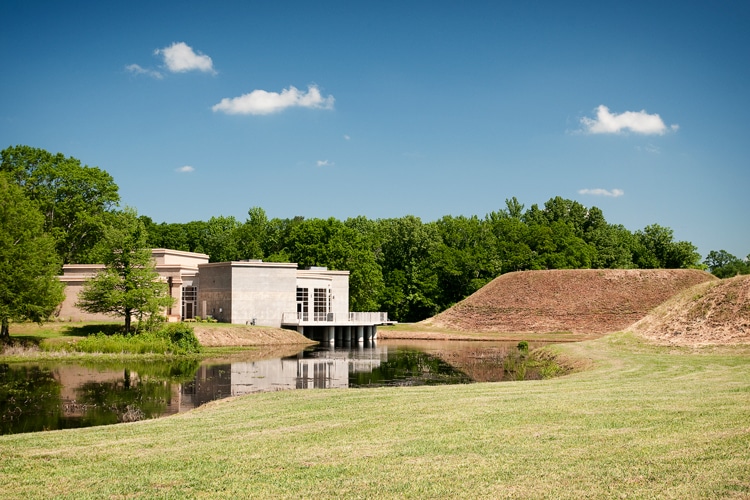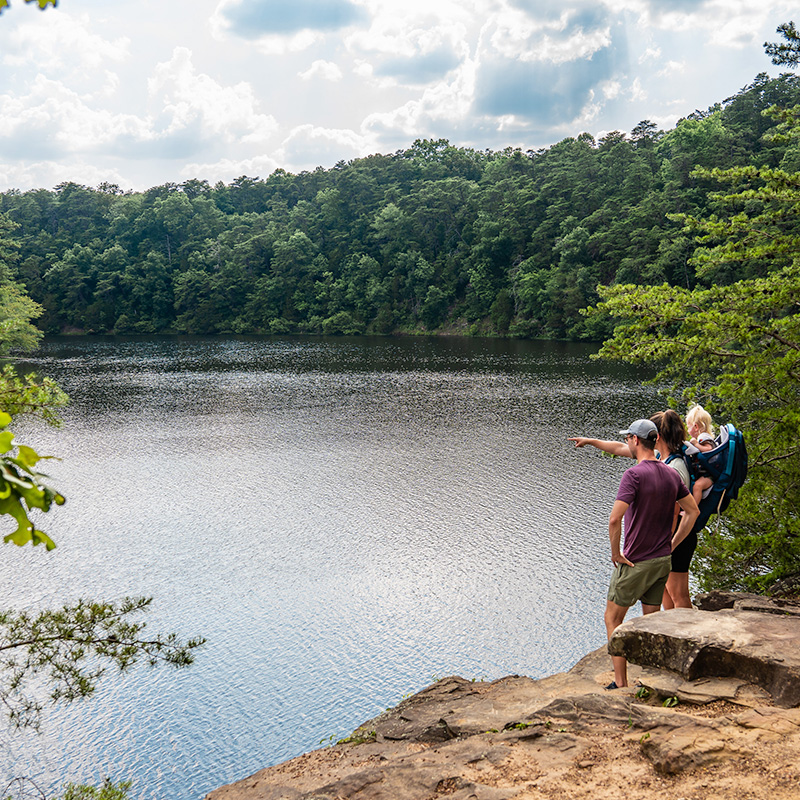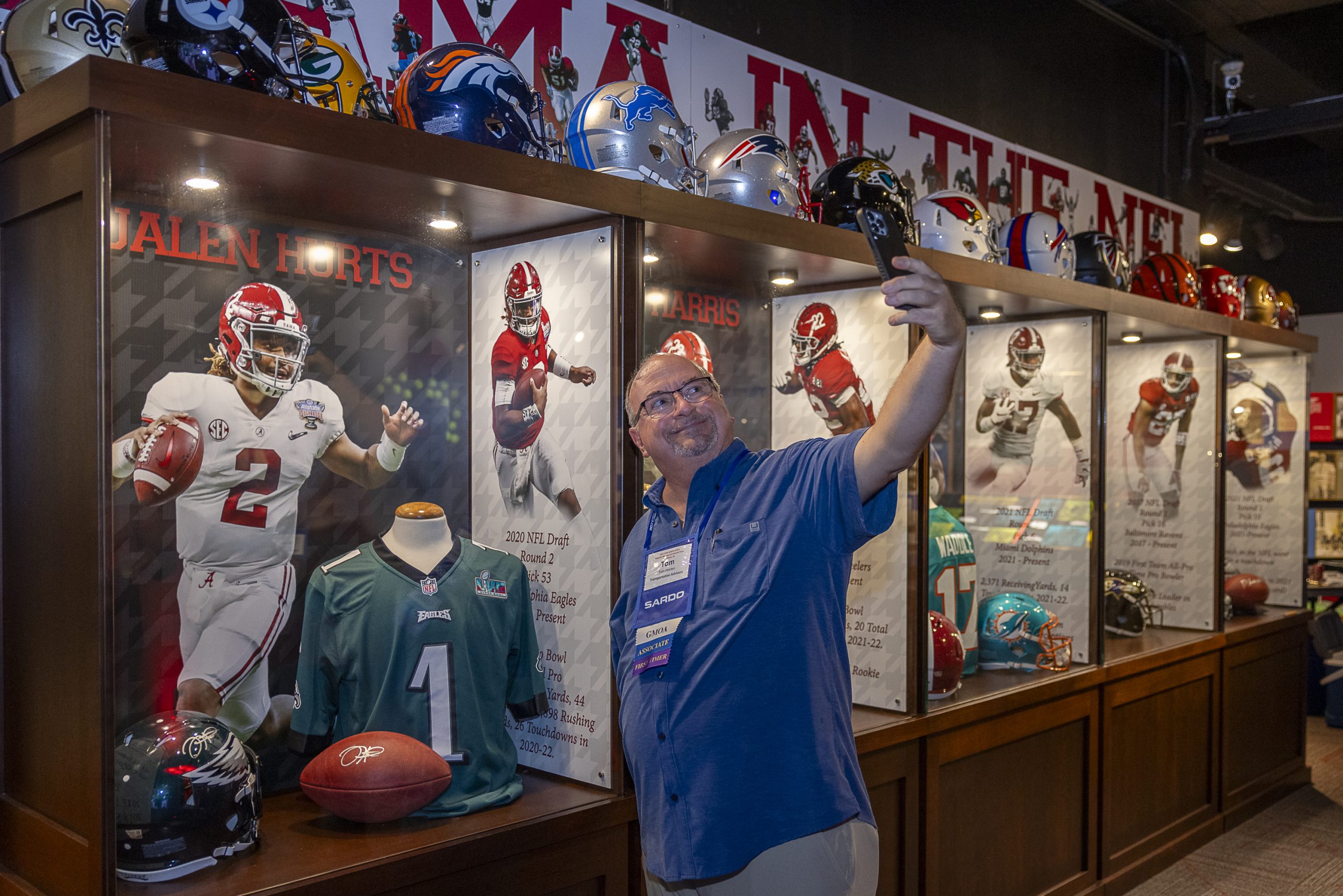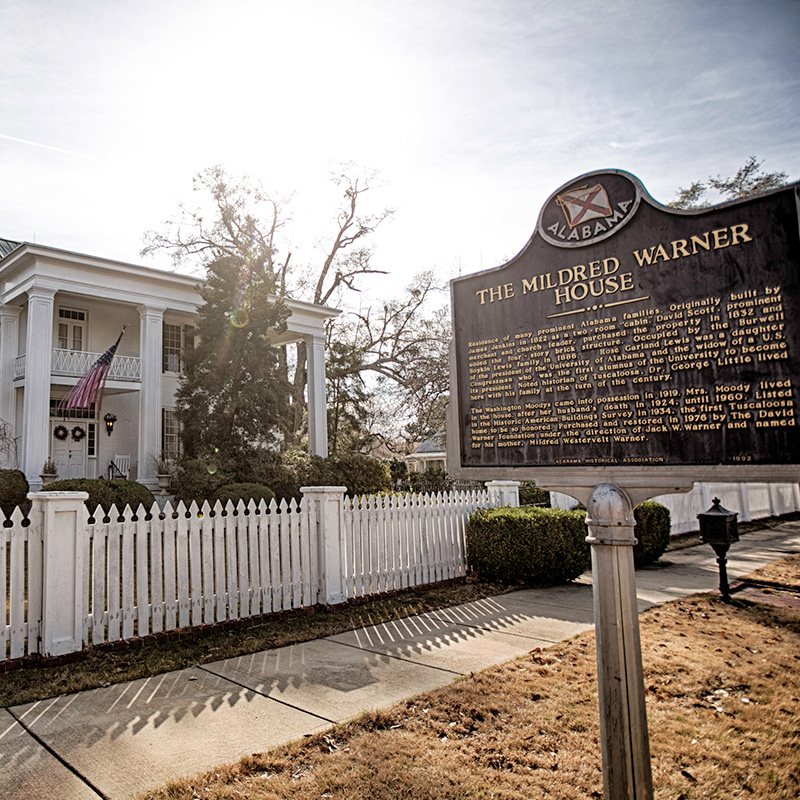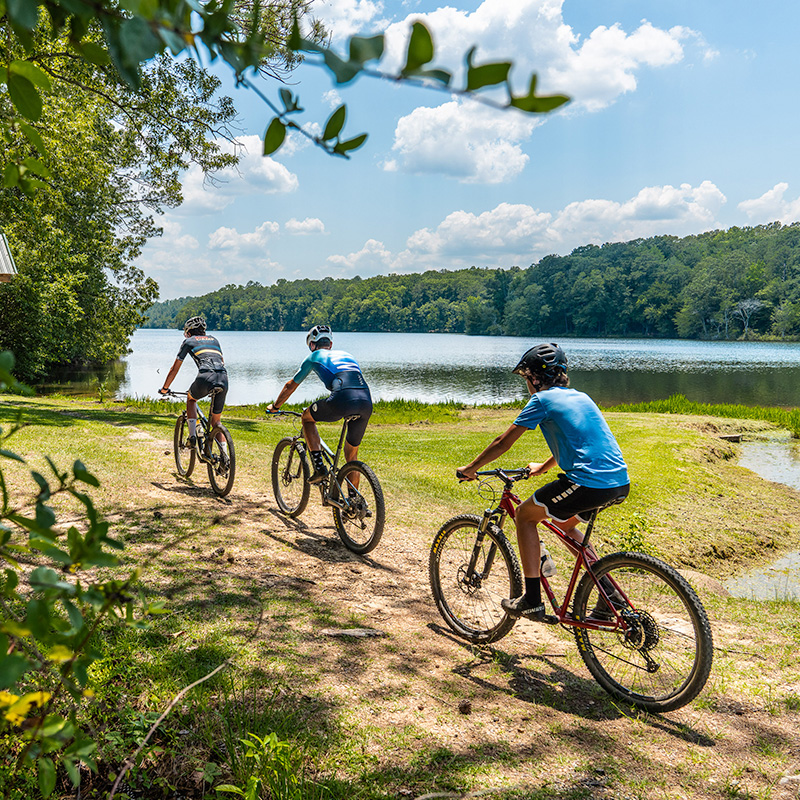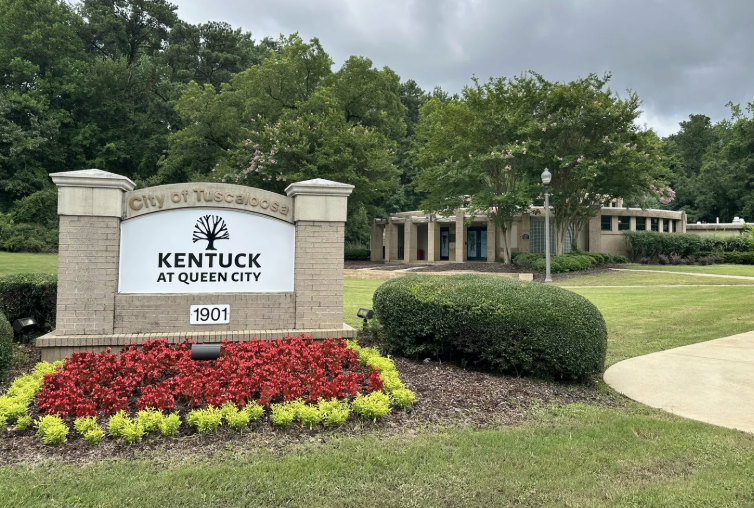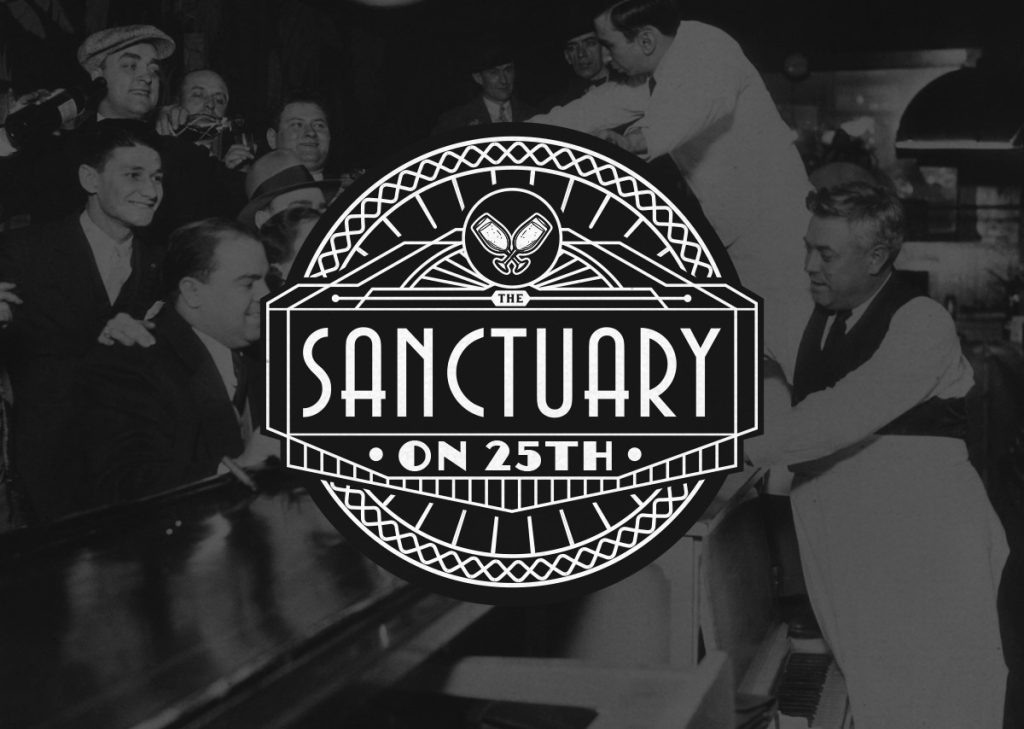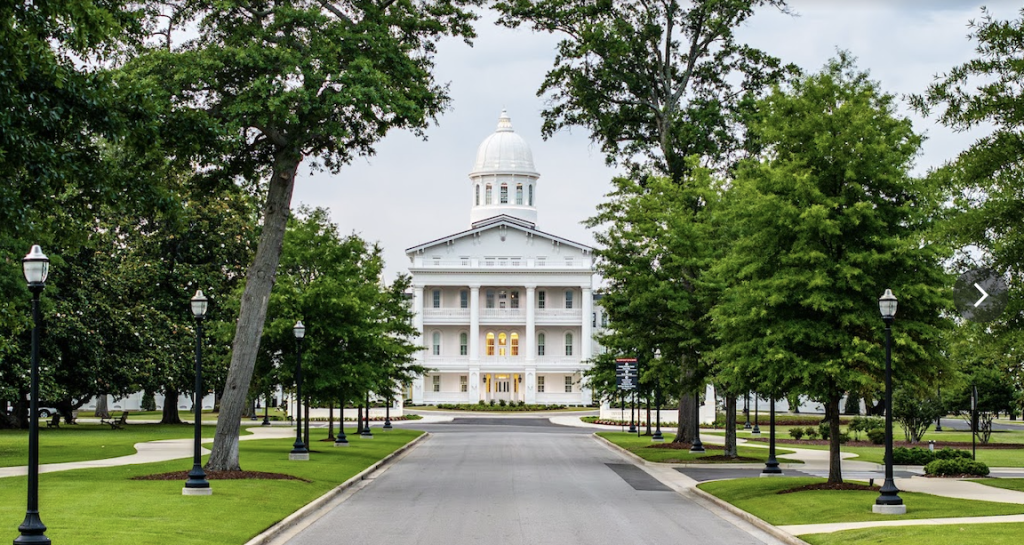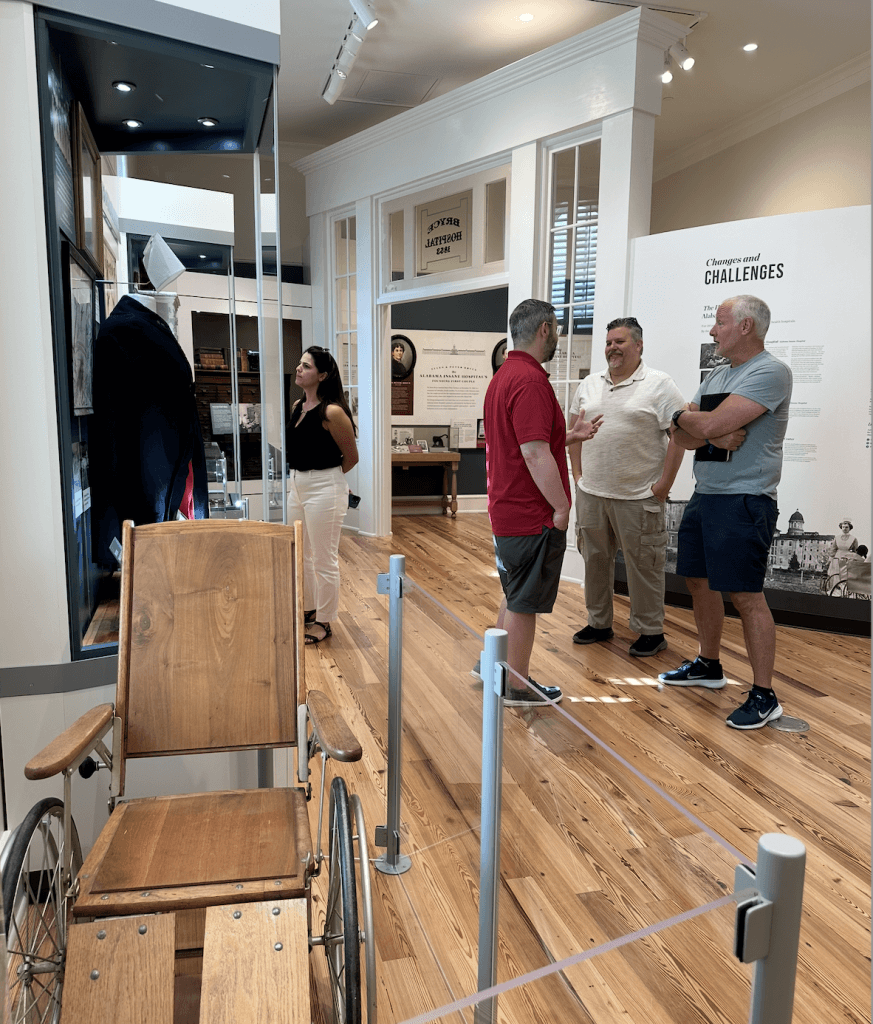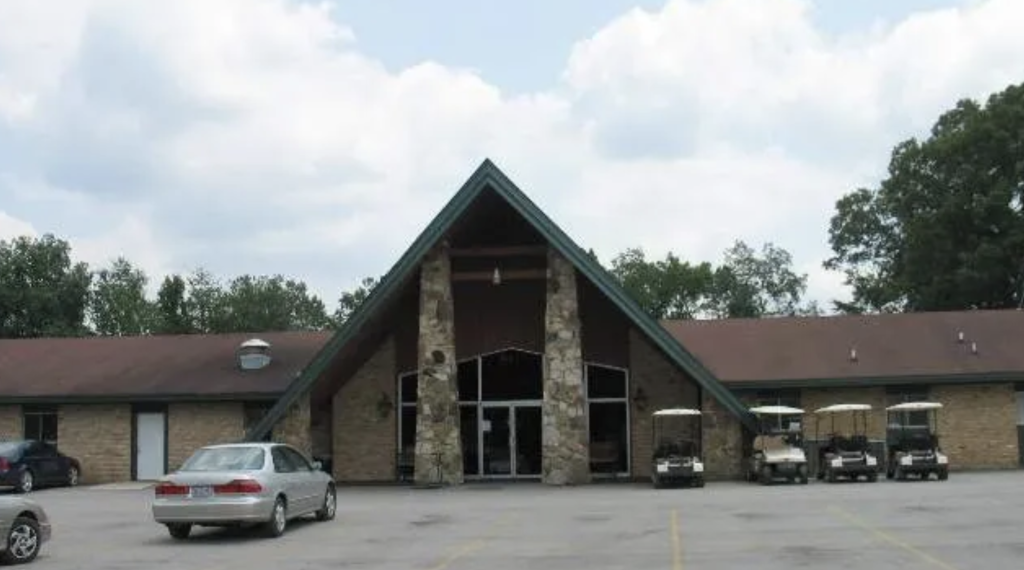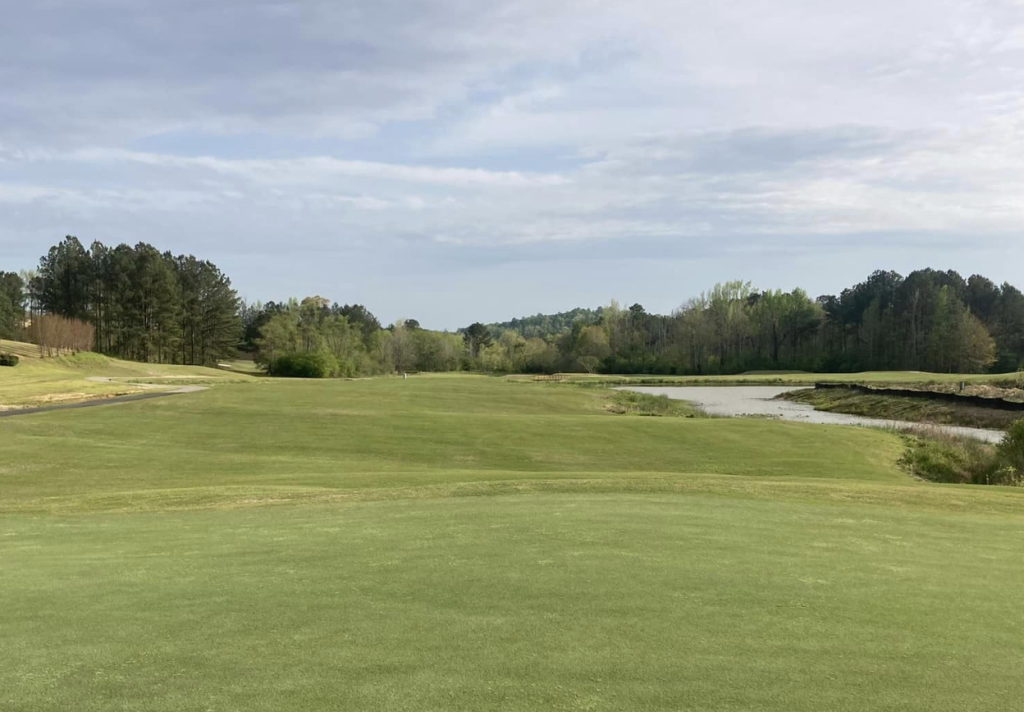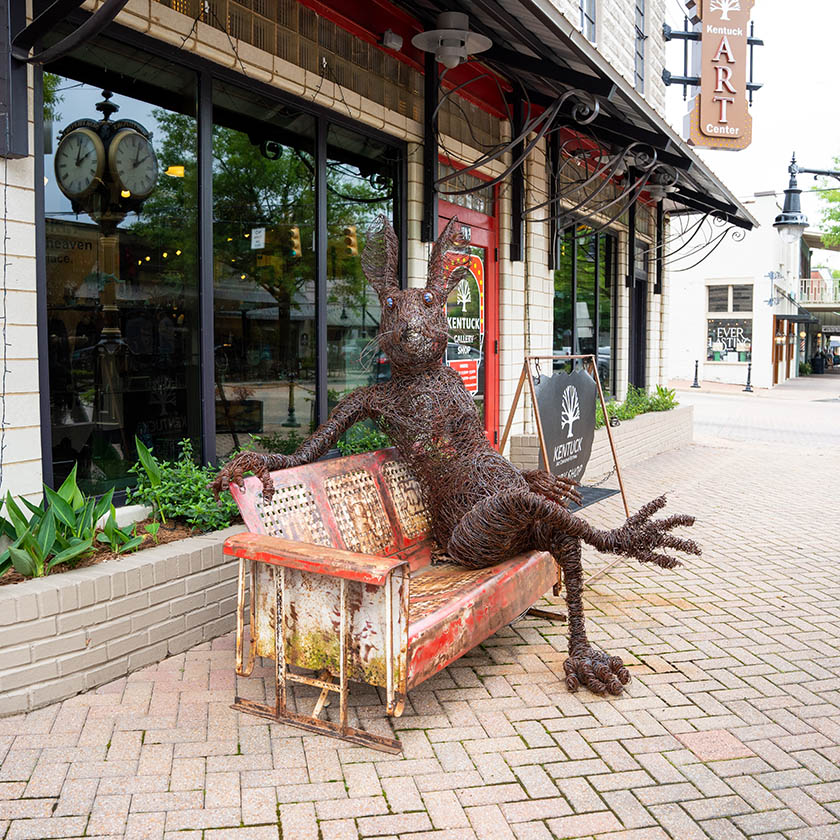ABOUT MOUNDVILLE
The University of Alabama’s Moundville Archaeological Park is one of the nation’s premier Native American heritage sites. Called “The Big Apple of the 14th Century” by National Geographic, Moundville Archaeological Park was once the site of a powerful prehistoric community that, at its peak, was America’s largest city north of Mexico.
Located on the Black Warrior River 13 miles south of Tuscaloosa, the park preserves 326 acres where, 800 years ago, Mississippian people constructed 29 massive flat-topped earthen mounds, arranged carefully around a vast central plaza. The mounds served as elevated platforms for civic and ceremonial structures and the homes of nobles.
Today, the panoramic landscape provides stunning views of these ancient monuments while the park’s museum displays many of the beautiful treasures that have been unearthed at the site, including the famous stone Rattlesnake Disk. The park also features a half-mile nature trail, picnic areas, scenic views of the Black Warrior River, and a campground.
ANCIENT SITE
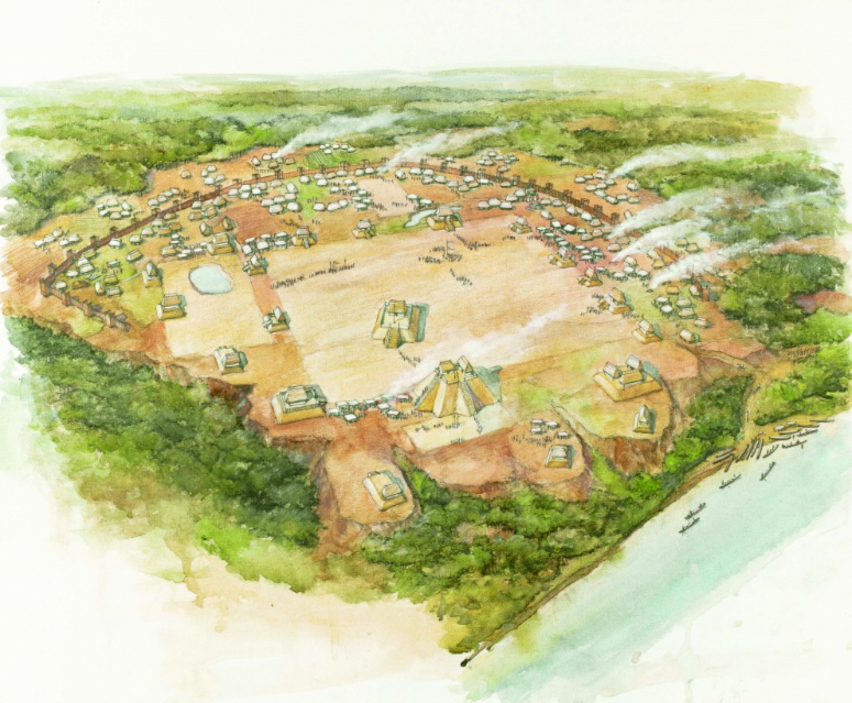
An artistic rendering of how the site might have looked 800 years agoThe Moundville site, occupied from around A.D. 1000 until A.D. 1450, is a large settlement of Mississippian culture on the Black Warrior River in central Alabama. At the time of Moundville’s heaviest residential population, the community took the form of a three-hundred-acre village built on a bluff overlooking the river.
The plan of the town was roughly square and protected on three sides by a bastioned wooden palisade. Moundville, in size and complexity second only to the Cahokia site in Illinois, was at once a populous town, as well as a political center and a religious center.
Within the enclosure, surrounding a central plaza, were twenty-six earthen mounds, the larger ones apparently supporting noble’s residences alternating with small ones that supported buildings used for mortuary and other purposes.
Neither the rise of Moundville nor its eventual decline is well understood by scholars. The immediate area appears to have been thickly populated, containing a few very small single-mound centers just before the creation of the public architecture of the great plaza and erection of the palisade about A.D. 1200.
However, by about A.D. 1350, Moundville seems to have undergone a change in use. The site lost the appearance of a town but retained its ceremonial and political functions. A decline ensued, marked by the abandonment of some mounds and the loss of religious importance in others. There was also a decrease in the importation of goods which had given prestige to the nobility.
By the 1500s, most of the area was abandoned with only a few portions of the site still occupied. Although the first Europeans reached the Southeast in the 1540s, the precise ethnic and linguistic links between Moundville’s inhabitants and what became the historic Native American tribes are still not well understood. Dr. Vernon James Knight, Associate Professor of Anthropology at the University of Alabama, is the Museum’s Curator of Southeastern Archaeology.

